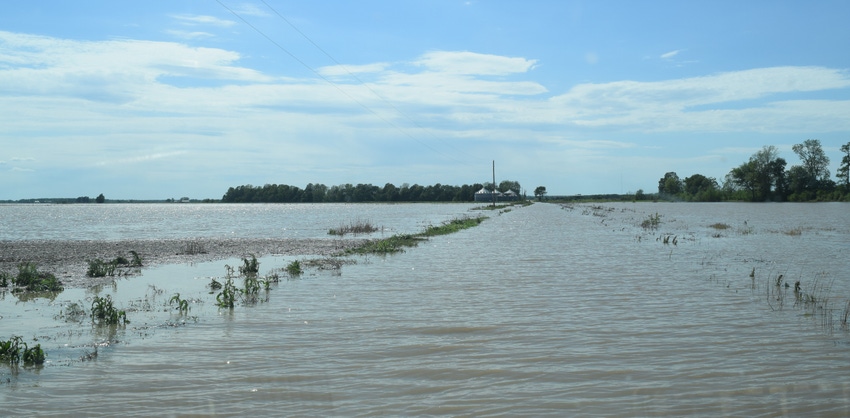
“At this point, we’re estimating over 150,000 acres of rice will have been lost by the time this is over,” says Jarrod Hardke, Arkansas Extension rice specialist. “Of course, soybeans and corn will be taken out, but to less an extent. There wasn’t as much of those crops planted in the region being affected – especially corn, which is typically planted in lighter soils on higher ground.”
The May 1 NASS report said 89 percent of Arkansas’ expected 1.2 million-acre rice crop had been planted.
“Once rice is 10 days submerged, you can start writing it off. Some will survive but once that 10-day mark is hit you’re on the downhill side of expectation for a good rice crop. Rice may like a flood but doesn’t like to be submerged. And while it may survive being submerged longer than other crops it has a breaking point.”
In many cases, says Hardke, “the water isn’t going down but is leveled out. And farther downstream the flooding is getting worse. The additional rain last week just added insult to injury. More rain is forecast for (the week of May 8).
“It’s heartbreaking for the areas hit. It’s very reminiscent of the flooding in 2011 when we thought the flooding was bad enough. By all accounts, this may have far surpassed that.”
The rains came while expectations for a great crop were high.
“Things were going so well. This has been described as one of the fastest, earliest, best-looking rice crops we’ve had in anyone’s recent memory. To have things go so well and then have an event like this is devastating – especially on the heels of the floods from excessive rains last August.”
More acres
The flooding of northeast Arkansas follows a shift to more rice acres in recent years.
“Our largest rice-producing counties are now in the northeast where the flooding is worst – Lawrence, Jackson, Poinsett. Arkansas County isn’t that far behind. Lawrence and Randolph counties have taken the brunt of the flooding. The hits just keep on coming for Randolph County. Obviously, flooding got them in 2011 and there have been some more minor issues until last year’s two flooding events.”
How much this could cost the state?
“Just for rice, and based on input costs incurred so far for acres that will be lost, it’ll be a $30 million loss. And that number will only get worse as the water moves farther south.
“That $30 million is only for the acres that’ll be lost. That doesn’t include the cost for all the acres affected – washed out levees that have to be re-pulled, lost yield, replanting, you name it.”
Hardke has been asked about potential help coming from the government.
“I’m being asked about this and the (Arkansas governor’s) disaster designation should kick things off. The area from Pocahontas to Walnut Ridge is the largest lake in the state, right now.
“Elnora Church just south of Pocahontas is kind of a landmark that’s a good place to pull into the parking lot and meet folks. I meet county agents and growers there all the time before heading out to a field.
“Right now, the water is to the eaves of that church. It has to be 8 feet deep. If that isn’t a disaster area, there isn’t one.”
About the Author(s)
You May Also Like




